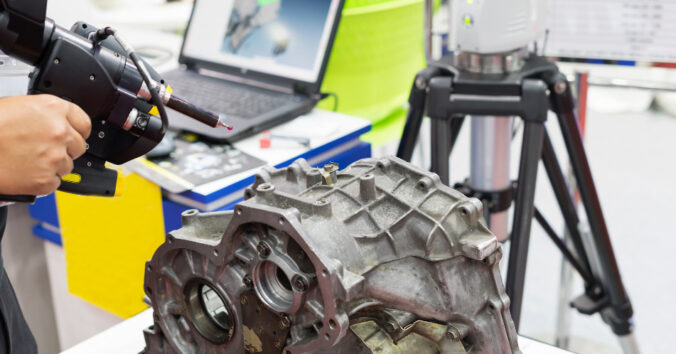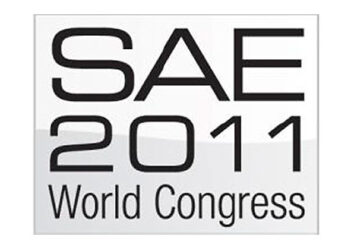SNECI supports a Chinese OEM in supplier quality support & incidentology

Thanks to our 70 years of expertise as well as our worldwide presence through our 10 subsidiaries, we are naturally well known by automotive professionals, whether they are manufacturers or suppliers.
Many manufacturers and suppliers contact us for projects related to industrial performance as well as for commercial development, and this, on an international level. Our teams come from all over the world and are likely to bring the best approach to the resolution of industrial problems.
For example, a Chinese car manufacturer asked our experts to accompany them in monitoring the quality of their vehicles after their launch in Europe. Thanks to our multicultural teams, we were able to create the link between a Chinese manufacturer and their French customer in order to ensure the follow-up of the quality of the vehicles delivered and marketed in Europe.
Context of the mission :
Our client, a Chinese company, designs and manufactures an electric vehicle sold on the Chinese market but its commercial success is mainly on the European continent.
Quality being a major issue for car manufacturers and European standards being different from Chinese ones, our client asked us to assist him in the management and control of the quality of his vehicles on the European continent.
To do this, we have provided our client with a team to act as a relay between Europe and China.
Historically, we have been working with this customer since 2019, for whom we have already carried out audits, monitoring of component suppliers, monitoring of incoming quality in the vehicle production plant, monitoring of quality during production and also the final quality of vehicles before shipment.
Let’s discover in detail our quality support for this Chinese car manufacturer exporting its vehicles to Europe.
Controlling the quality of vehicles :
Our mission has been established to monitor the quality of the vehicles delivered from the point of view of European Customers.
There are different ways to control quality, including monitoring component suppliers and incoming quality (i.e. checking the parts that arrive in the factory to ensure their compliance during the assembly process of vehicles and / or at the end of it).
There are two ways to check whether the parts that make up the vehicle meet the expectations of a manufacturer:
- Through an SQE in contact with the component suppliers Mission which is a long term verification, during the whole project in general.
- Through an SQA, it is a process that allows to verify in a regular way if the incoming quality in the vehicle assembly plant meets the different expectations in terms of quality.
There are other ways of monitoring vehicle quality, such as the verification of the quality of outgoing vehicles (Quality Gate) which, through verification processes, ensures that all functions of the finished product are correct.
This process is accompanied by checklists that are more or less detailed depending on the time spent checking the vehicles. These checklists can be grouped together for the Renault Nissan Mitsubishi Alliance in what is called the AVES (Alliance Vehicle Evaluation System) standards. The concept is to put ourselves in the customer’s shoes and check the vehicles to find any defects and classify them by level of criticality according to the degree of the defect, different correction methods will be applied
These verification processes, which are carried out by the manufacturer, are executed both at the departure and at the arrival of the vehicles (in a country / in the distribution network to ensure that the transport has not had any impact on the car). These verifications are sometimes a source of tension between manufacturers and networks because expectations are not the same from one country to another.
In the case of our customer, each car, upon reception, was checked according to the Quick AVES method (30 minutes of checking) to ensure the proper functioning of the product upon arrival in Europe.
Management of customer returns :
As you can see, quality is a real issue for car manufacturers. Our client does not have the resources in Europe to ensure the monitoring of the quality of the delivered vehicles and cannot be both judge and jury, so he asked us to provide him with resources capable of monitoring all the incidents recorded by the distribution network as well as by the final customers of the vehicles.
Note that all these incidents are followed through a LUP-QC List (Unique Quality Concern List).
What is the LUP-QC?
It is a list systematically recording all the real or felt customer problems for which a particular attention is paid to the customers’ returns who can complain about possible defects going from a minor problem to an immobilizing problem (the car cannot move because of this difficulty). All these problems are included in this LUP-QC.
Our Incidentology Engineer is the linchpin set up to link customer defects with the manufacturer (production / supplier management / engineering …) to ensure that all parties are aware of possible defects and can correct them as soon as possible.
Our “Incidentologist” engineer deals with open issues with a level 1 analysis and eventually launches level 2 analyses. In short, he is an orchestra conductor who must ensure that all the people who may be involved in the resolution of a problem can contribute in order to ensure that the problem is “closed” as soon as possible or is “accepted as is” (i.e. that complaints are in fact very rare and that it is possible to live with the defect) or that the action plan implemented by the manufacturer is very “robust” or that the problem is put in “hold” mode while waiting for further analysis.
SNECI Quality in the network – the Incidentologist at the service of quality :
In our case, the pilot of the operation is an Incidentologist who speaks the language of the vehicle manufacturer but also that of the distribution network and of the customers. Thanks to his culture of the two countries, he is able to explain and deliver the most precise customer feedback and thus to respond in the most optimal way to any emerging problem in the use of vehicles.
They have knowledge of vehicle technology and problem solving methodology.
In general, Incidentology engineers are often put in place during the 6, 9 or 12 months after the launch of a vehicle project. This period ensures that any teething problems that were not identified during the validation phases are identified and corrected.
These follow-up phases are called VLO phases (Vehicle Launch Operations), they are used to collect the slightest error from the people who are involved around the vehicle and its customers.
Incidentologist and Flying Doctor.
As soon as a problem is recorded, the Incidentologist takes on the role of “flying doctor” and can go on site (in the repair network) to observe a new anomaly on a vehicle before the vehicle or the part concerned is affected.
This “flying doctor” role requires firstly, the possibility to go and check the nature of the problem, and secondly, to diagnose the root causes to know where the defect comes from.
The engineer must therefore trace the source of the fault using several methods: the Ishikawa tree, 5 Whys, etc.
Beyond these initial observations, the incidentologist’s job is to ask for verification or double verification of a particular assembly process or part from the various players in order to ensure that the problem is understood, corrected and that the final product is as perfect as possible.
He has to challenge, re-challenge and make sure that the answer given is plausible and solid.
The details are very important, we evolve in a world of multiple technical constraints with strong impacts in terms of time and money, there is no room for error.
Is quality a cost for companies ?
In reality, quality has never been a cost for companies, on the contrary, it represents a profit center because the detection of a problem in what is called weak signals (some problems that appear on the first vehicle deliveries).
The problems are prioritized and resolved in order of severity. The consequences for the most critical ones can go as far as a total or partial recall of the vehicles in order to solve the problem on the whole incriminated fleet.
In general, vehicle recalls are reported in the press because they are the consequence of the biggest problem that can happen to a manufacturer.
This consequence is very expensive first of all in terms of image and in terms of costs because it is necessary to modify all the cars already sold.
This vehicle recall costs millions of euros, so paying a person who is responsible for monitoring the start of production delivered to customers can avoid these very damaging situations.
We avoid these situations by trying to solve them as soon as possible, thanks to our Incidentologists. They play a crucial role in ensuring that the problem is understood when it is discovered so that it can be quickly resolved or accepted as is.
This work is driven by the Incidentology team to ensure that the defect is real, understood, and that the case is strong and built enough to make the right decisions early.
The goal is not to create a single good vehicle, the goal is to produce thousands of good vehicles in controlled processes. The manufacturers are therefore obliged to set up quality departments to be able to follow all the phases of the projects and satisfy all their customers.
How long is an Incidentologist needed in a company ?
There is a debate on this subject. Some think that Incidentologists should be hired forever. Others think that engineers should remain according to the evolution of the LUP-QC, therefore over a specific period of time.
As soon as the list is empty, there is no reason to keep an Incidentologist permanently on site in the network to monitor the quality of the vehicles since all the problems could be solved.
Results :
On this project, our customer asked us to create a link between a Chinese manufacturer and the network, the European customers. We therefore set up an engineer trained in France and living in Europe with Chinese origins, to facilitate exchanges between these actors.
This project of Chinese vehicle imported in Europe has been successfully launched.
In addition, customer feedback was received very quickly by the manufacturer, which allowed the product to be improved quickly and to adapt to the expectations of this market.
SNECI & SQE support:
SNECI is a service and consulting company, specialized in international business development and industrial performance improvement since 1952. With 450 technical experts within the SNECI Group and 10 subsidiaries around the world, we offer tailor-made, responsive, local and agile support in improving industrial performance.
We support our customers on industrial projects (launches, transfers, optimization …), thanks to our experts in process engineering and supplier development, in order to control the quality, cost and deadline aspects.
If you want one of our experts to help you improve your quality system (saving time, money and efficiency),contact us directly via the contact tab on our website.





